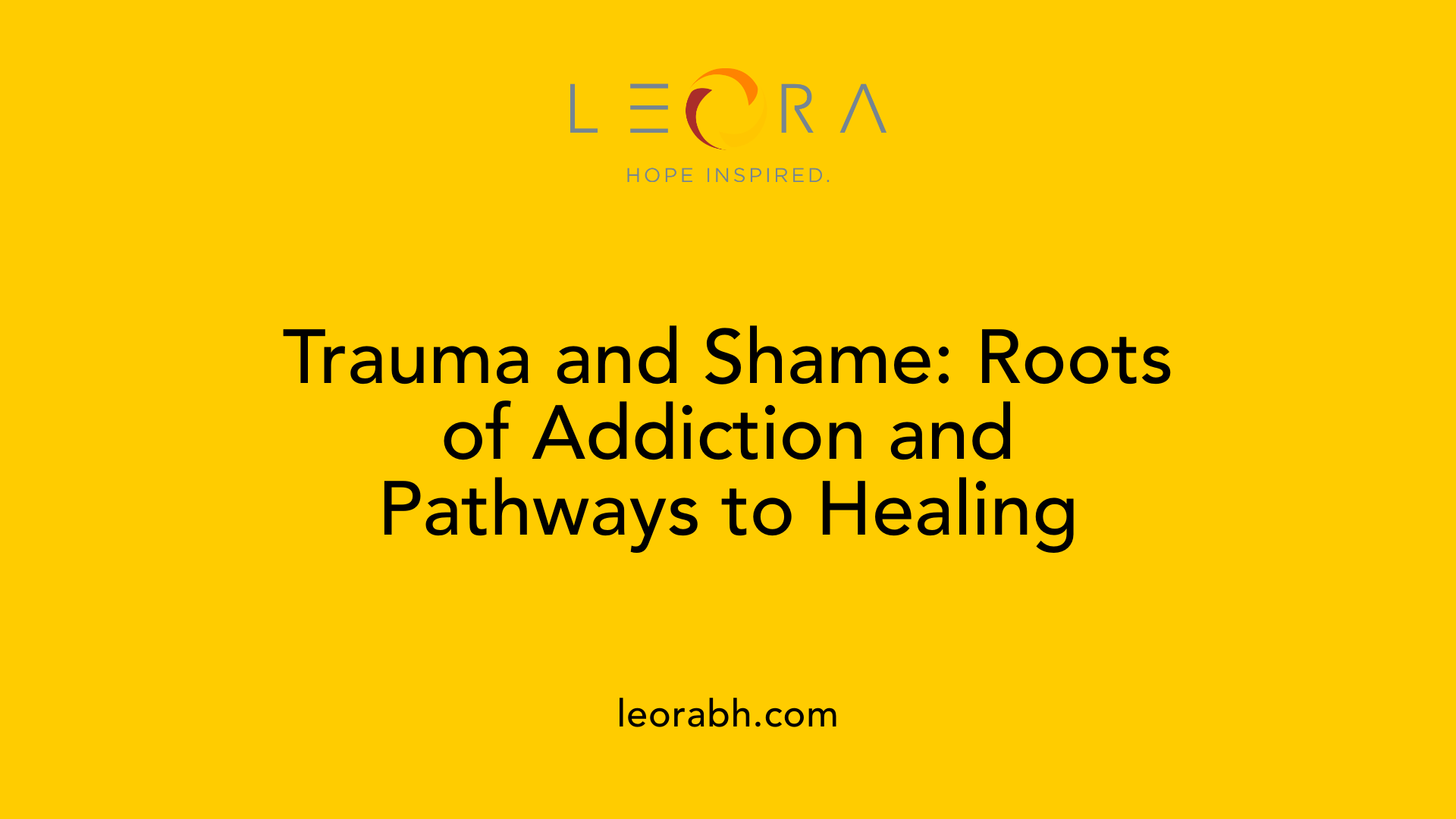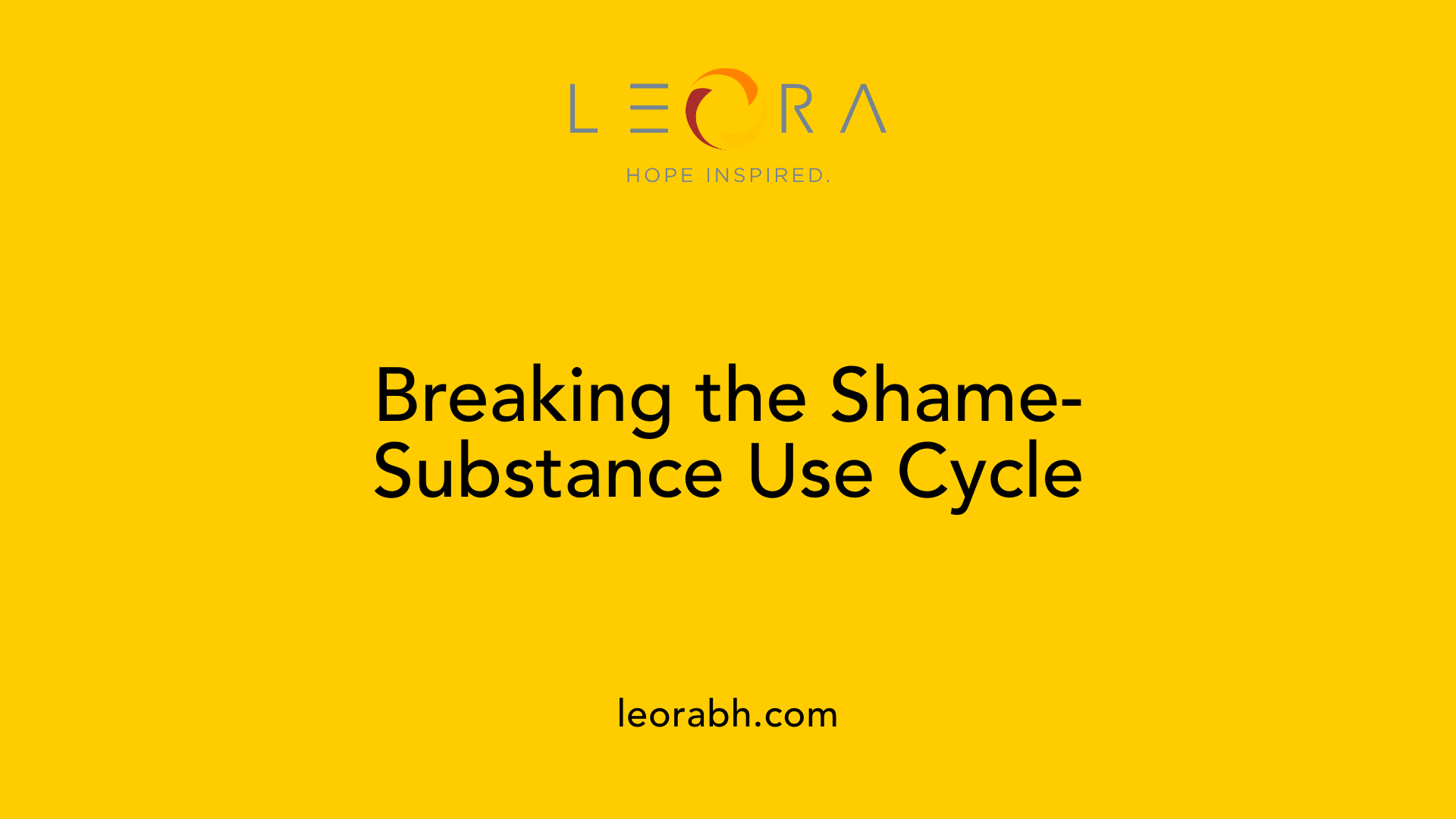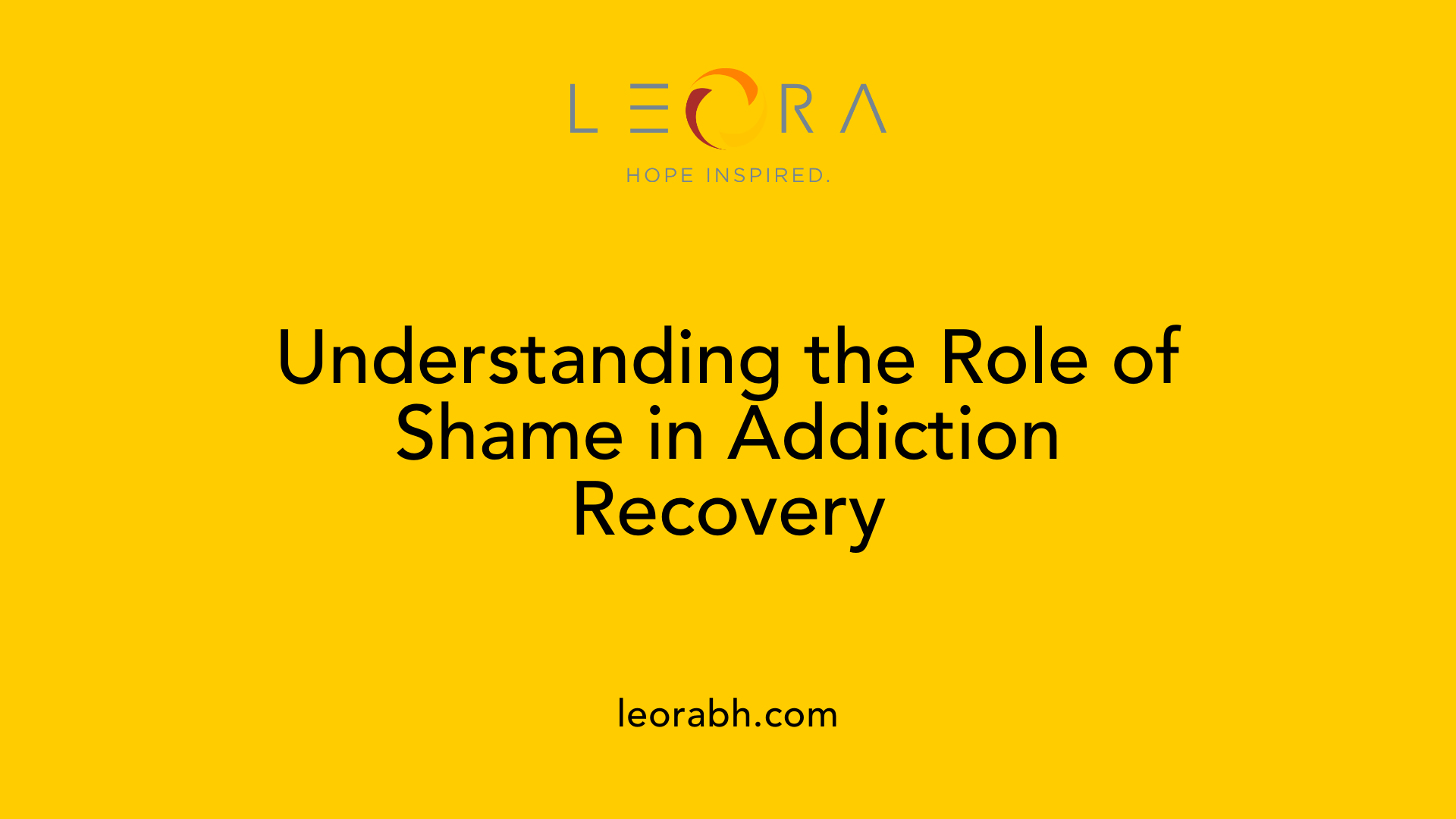Understanding the relationship between shame and addiction
The Silent Power of Shame in Addiction Recovery
Unveiling the intricate link between shame and addiction
Understanding the complex relationship between shame and addiction is crucial to developing effective treatment strategies. Shame, an emotion rooted deeply in our self-perception, profoundly influences addictive behaviors, recovery processes, and mental health. This article explores how shame sustains addiction, impacts recovery, and how therapeutic and spiritual approaches can facilitate healing by addressing shame at its core.
Differentiating Shame and Guilt in the Context of Recovery

What is the difference between shame and guilt in recovery?
In the journey of addiction recovery, understanding the emotions of shame and guilt is crucial because they influence behavior and healing differently. Guilt relates to specific actions — it is the feeling that one has done something wrong. When someone feels guilty, they recognize their behavior caused harm and may feel remorse. This emotion, when acknowledged constructively, can serve as a motivation for positive change, encouraging individuals to make amends and improve their behavior.
Shame, on the other hand, is a more pervasive feeling. It involves a belief that one is inherently bad, unworthy, or defective. Unlike guilt, which targets particular actions, shame affects the core sense of self. It often leads to feelings of worthlessness, self-loathing, or inadequacy, making it more destructive and harder to address.
Impact of each emotion on behavior and recovery
Healthy guilt can motivate responsible behavior and personal growth. It prompts individuals to reflect, apologize, and learn. However, shame can create a cycle of hiding, withdrawal, and self-criticism. For those in recovery, unaddressed shame may lead to further substance use as an escape mechanism, deepen depression, or cause relapse.
Research indicates that high shame levels are associated with poorer recovery outcomes. Feelings of shame can prevent individuals from seeking support or admitting their struggles, thus prolonging addiction and complicating healing.
Constructive ways to handle guilt and shame during recovery
Addressing guilt constructively involves recognizing specific behaviors, taking responsibility, and working towards making amends. This process fosters accountability and facilitates emotional growth. Support groups, therapy, and personal reflection can help individuals process guilt in a healthy manner.
Handling shame requires a different approach. Building self-compassion, fostering a sense of acceptance, and working with therapists to reframe negative self-perceptions are effective strategies. Creating a safe environment for vulnerability allows individuals to confront and diminish feelings of shame.
Therapies such as cognitive-behavioral therapy (CBT), narrative work, and programs like 12-step groups emphasize self-acceptance and empathy, which are crucial for overcoming shame. Developing self-empathy can help individuals see themselves beyond their mistakes, promoting resilience and fostering a positive self-identity.
By distinguishing between guilt and shame and addressing each appropriately, individuals in recovery can better navigate emotional challenges, reduce barriers to healing, and improve their prospects for lasting sobriety.
Trauma as a Root Cause of Addiction and Its Ties to Shame

What are the top three trauma types linked to addiction?
The most common traumas associated with addiction include childhood neglect and abuse, sexual abuse, and experiences of violence or physical trauma. These traumatic events often cause deep, lasting changes in brain structure and function, which can increase a person’s vulnerability to substance use as a way to manage emotional pain.
Trauma experienced during childhood can disrupt normal emotional development and attachment patterns, leading individuals to seek relief through substances. Sexual abuse and violent trauma are especially impactful, often resulting in conditions such as post-traumatic stress disorder (PTSD). In adolescence, these trauma-related conditions significantly raise the risk of developing substance use disorders.
Many individuals turn to drugs or alcohol to self-medicate and escape from the intense feelings of distress rooted in these traumatic experiences. Recognizing and addressing both trauma and addiction at the same time through trauma-informed treatments can greatly improve recovery rates. These approaches help individuals process their trauma safely, reduce shame, and learn healthier coping strategies, thus supporting a more sustainable path to healing and preventing relapse.
The Cycle of Shame in Addiction Maintenance

How does shame perpetuate addiction?
Shame acts as a powerful force that can keep individuals trapped in addiction. When someone experiences shame, they often see themselves as inherently flawed or unworthy. This negative self-view can lead to feelings of hopelessness and the belief that they do not deserve help or recovery. As a result, they may turn to substances like drugs or alcohol as a way to numb these painful emotions. The temporary relief gained from substance use then reinforces feelings of shame, creating a cycle that is difficult to break.
This cycle is especially intense when shame is toxic—deep-seated, pervasive, and rooted in internalized negative beliefs. Trauma, childhood abuse, or dysfunctional environments often contribute to this deep shame, which can become subconscious and harder to address. Addicts may also conceal their shame, hiding behaviors and feelings out of fear or embarrassment, further isolating themselves.
Feedback loop of shame and substance use
The cycle of shame and substance use develops into a harmful feedback loop. After using substances to escape feelings of worthlessness, an individual might experience remorse or further self-criticism. These feelings increase shame, which then triggers more substance use as a form of self-medication. Neurobiological research shows that substances can modulate brain circuits involved in shame, temporarily dulling painful feelings but ultimately maintaining the cycle.
Long-term, this loop leads to worsening mental health, increased shame, and greater difficulty in seeking help. The more a person relies on substances to manage shame, the deeper their sense of unworthiness becomes. This cycle also entangles family dynamics, often spreading shame into relationships and social environments, making recovery even more challenging.
Breaking the shame cycle
Addressing this cycle involves understanding and tackling both the emotional and neurobiological aspects of shame. Interventions like therapy focus on fostering self-compassion and empathy. Techniques such as cognitive-behavioral therapy (CBT), narrative work, and shame resilience strategies encourage individuals to recognize and accept their feelings without self-judgment.
Creating a safe, supportive environment is essential. Support groups like Alcoholics Anonymous promote openness, helping individuals share their vulnerabilities and reduce feelings of shame. Additionally, developing a sense of self-worth—through skill-building, community involvement, or spiritual practices—can help counteract toxic shame.
Most importantly, recovery involves a shift from shame-driven self-punishment to one of growth and self-acceptance. Emphasizing change rather than blame empowers individuals to reclaim their lives, break free from the destructive shame cycle, and build resilience against future triggers.
Impact of Shame on Addiction Treatment and Recovery Outcomes

How does shame affect codependency?
Shame plays a significant role in the development and reinforcement of codependency. It often stems from childhood experiences such as emotional abandonment or dysfunctional family environments, which embed feelings of unworthiness and self-inadequacy.
In individuals with codependency, shame fosters negative self-beliefs and internalized feelings of being inherently flawed. This leads to behaviors focused on seeking approval and avoidance of rejection, hallmark traits of codependent relationships.
Low self-esteem resulting from shame impairs one’s ability to establish healthy boundaries or recognize their worth outside external validation. As a consequence, affected individuals may become overly focused on pleasing others at the expense of their own needs.
Furthermore, shame can drive addictive tendencies and compulsive behaviors as mechanisms to temporarily escape feelings of inadequacy. These behaviors create a vicious cycle where shame fuels addiction, which in turn heightens shame.
Healing internal shame is crucial for breaking free from codependent patterns. Therapeutic interventions that promote self-compassion and address deep-seated shame can lead to healthier self-perception, improved relationships, and greater resilience in recovery.
Addressing shame not only benefits individual well-being but also enhances the effectiveness of addiction treatment programs by reducing relapse risk and fostering genuine self-acceptance.
How does shame inhibit seeking help?
Shame often causes individuals to hide their struggles and avoid seeking support. Due to fear of judgment or feelings of worthlessness, many people with addiction or mental health issues resist opening up. This self-imposed isolation prevents access to vital treatment, prolonging suffering and compounding the cycle of addiction.
How do feelings of shame affect self-esteem and relapse risk?
High levels of shame correlate with diminished self-esteem, feelings of hopelessness, and increased susceptibility to relapse. Longitudinal studies reveal that shame and self-criticism are strong predictors of relapse, as they impair motivation and reinforce negative self-perceptions.
Therapeutic approaches that build shame resilience, such as self-compassion training and support groups, are shown to improve treatment adherence and long-term recovery outcomes.
Strategies to address shame during therapy
Effective approaches include creating a safe and nonjudgmental environment, encouraging voluntary disclosure of shame-based vulnerabilities, and fostering self-empathy.
Therapies like Cognitive Behavioral Therapy (CBT), narrative therapy, and shame resilience building focus on reframing negative beliefs, promoting self-forgiveness, and developing a compassionate self-attitude.
Support groups, such as Alcoholics Anonymous, promote emotional openness and mutual understanding, helping individuals confront and reduce shame.
Incorporating spiritual practices and mindfulness can also help individuals reconnect with their inner selves, fostering healing and reducing shame’s hold on their lives.
Addressing shame comprehensively enhances treatment engagement, reduces relapse rates, and supports genuine recovery and well-being.
| Aspect | Impact | Intervention Strategies |
|---|---|---|
| Shame as a barrier | Leads to avoidance of help | Creating safe environments, encouraging openness |
| Effect on self-esteem | Lowers confidence, increases vulnerability | Self-compassion exercises, therapy |
| Relapse risk | Elevated due to shame-induced self-criticism | Building shame resilience, support groups |
Understanding the profound influence of shame in addiction and recovery highlights the importance of incorporating shame-sensitive approaches in treatment programs to foster lasting change.
The Role of Therapeutic and Spiritual Approaches in Healing Shame
What therapies target shame in addiction recovery?
Therapeutic methods like Cognitive Behavioral Therapy (CBT), narrative therapy, and support groups such as Alcoholics Anonymous (AA) focus on uncovering and addressing shame. These approaches encourage sharing feelings in safe environments, which helps individuals recognize and reframe shame-based thoughts. Therapies also promote self-acceptance and self-compassion, essential for healing. Techniques aimed at building self-esteem and resilience contribute to breaking the cycle of shame and substance use.
How can spiritual practices help reduce shame?
Spiritual activities like prayer, meditation, and participation in faith communities provide a powerful means of reconnecting with a higher purpose or divine presence. These practices foster forgiveness, acceptance, and compassion—both towards oneself and others. Engaging in spirituality offers a sense of belonging and hope, counteracting feelings of worthlessness often associated with shame. Spiritual healing supports emotional resilience and helps individuals release guilt and toxic shame, paving the way for genuine self-love.
Why are self-compassion and empathy important in healing shame?
Developing self-empathy and compassion turns the focus away from self-criticism, which sustains shame. Therapeutic techniques that cultivate kindness towards oneself help individuals reframe their self-image from defective to deserving of care. Empathy, especially self-empathy, builds emotional safety, enabling people to face painful feelings without overwhelming shame. This compassionate approach promotes gradual healing, growth, and a stronger foundation for lasting recovery.
| Approach | Focus | Outcomes | Supportive Techniques |
|---|---|---|---|
| Therapy | Addressing shame directly | Emotional healing, increased self-esteem | CBT, narrative therapy, support groups |
| Spiritual practices | Connecting with higher power | Forgiveness, peace, hope | Prayer, meditation, scripture reading |
| Self-compassion | Cultivating kindness toward oneself | Reduce shame, resilience | Mindfulness, compassion exercises |
Addressing shame comprehensively through therapy and spirituality creates a supportive environment where healing can flourish. Recognizing shame's role in addiction, these approaches aim to foster internal change, self-acceptance, and ultimately sustained recovery.
Neurobiological Insights into Shame and Addiction
How does shame affect brain activity related to addiction?
Research in neuroscience reveals that shame activates specific areas of the brain, notably the prefrontal cortex and posterior insula. These regions are integral to processing self-evaluation, emotional pain, and social judgment. They are interconnected with the limbic system, which governs emotional responses, including feelings of guilt and worthlessness.
In individuals with addiction, shame responses are particularly pronounced. When experiencing shame, these brain regions work together to reinforce negative self-perceptions, often leading to a cycle where emotional distress triggers substance use for relief. This neural activity can be observed as heightened activity in the prefrontal cortex, which is involved in judgment and decision-making, and in the posterior insula, which is linked to bodily sensations and visceral emotional experiences.
Furthermore, substances of abuse can excessively modulate these circuits. For instance, they may temporarily dampen activity in areas associated with shame and emotional pain, offering short-term relief. However, this modulation also reinforces the cycle, as the temporary alleviation of shame motivates further drug use, deepening the emotional wound.
Understanding these neural pathways highlights the importance of therapeutic approaches that focus on emotional regulation and neuroplasticity. Treatments like cognitive-behavioral therapy (CBT) or neurofeedback aim to retrain these brain circuits, helping individuals better manage feelings of shame and reduce reliance on substances. Recognizing the brain’s role in shame-related addiction offers promising avenues for integrated neurobiological and psychological interventions.
Building Hope and Resilience: The Path Forward

How do shame and guilt impact recovery processes?
Shame and guilt deeply influence the journey of recovery, particularly for those battling substance use disorders. Guilt often relates to specific actions and, when experienced in a healthy manner, can encourage accountability and motivate positive behavioral changes. It prompts individuals to make amends and rebuild trust with themselves and others.
However, toxic shame—an overwhelming sense of worthlessness and self-loathing—can obstruct progress. It tends to diminish self-esteem, promote social withdrawal, and perpetuate negative self-perceptions. Shame can trigger emotional and physiological responses such as withdrawal, anxiety, or physical discomfort, which may lead some to rely more heavily on substances to numb these painful feelings.
Both guilt and shame influence how individuals respond to their addiction. While guilt can serve as a catalyst for change, shame often acts as a barrier, reinforcing feelings of inadequacy and unworthiness. Addressing these emotions through self-awareness and compassionate therapies helps individuals move past their struggles. Building resilience involves learning to acknowledge and process shame and guilt without becoming overwhelmed, cultivating a sense of self-acceptance that fosters internal strength and hope.
Effective recovery strategies focus on transforming destructive shame into supportive self-attitudes. This includes creating a supportive environment where vulnerability is safe, encouraging self-forgiveness, and developing a compassionate understanding of one’s experiences. Support groups, therapy, and community involvement play vital roles in this transformational process, helping individuals to reframe negative emotions and develop a resilient mindset.
Building resilience also involves recognizing the importance of community and social support. A network of understanding peers and mentors provides encouragement, reduces feelings of isolation, and enhances positive self-regard. By fostering an environment of acceptance and shared experience, individuals are more likely to recover and thrive beyond their addiction.
Fostering Healing by Addressing Shame
In understanding the intricate bond between shame and addiction, it becomes evident that treatment success hinges on addressing shame constructively. Recognizing shame as more than just a personal failing but as a complex emotional response rooted in early trauma, social stigma, and internalized beliefs allows for more compassionate, effective therapeutic strategies. Integrating trauma-informed care, spiritual practices, and neural-based interventions can break the cycle of shame and addiction, fostering resilience, self-worth, and long-term recovery. Ultimately, healing from shame is vital not only for overcoming addiction but also for restoring a person's sense of identity, purpose, and connection with others.
References
- The shame spiral of addiction: Negative self-conscious emotion and ...
- Shame: The Core of Addiction and Codependency - Psych Central
- Managing shame and guilt in addiction: A pathway to recovery
- Understanding The Burden Of Guilt and Shame In Addiction Recovery
- How Shame Can Play a Role in Addiction - Olympia House Rehab
- The Hidden Struggle: Understanding Shame in Addiction
- The Unspoken Struggle: Addiction's Cycle of Shame - Site
- Understanding the Relationship Between Shame and Addiction
- The Shame of Addiction - PMC
- The Relationship Between Shame, Addiction, and Spirituality | S2L
Find Your Inner Light
Related Articles
Schedule an Assessment
Leora Behavioral Health provides comprehensive treatment services, including ambulatory detox, mental health IOP, and SUD IOP, to support your journey toward lasting recovery.
Our caring team will guide you through the admissions process and create a personalized treatment plan tailored to your unique needs. We welcome walk-ins. If you or a loved one is struggling, reach out today. We’re here to help.


.svg)




.svg)
.svg)
.svg)
.svg)
